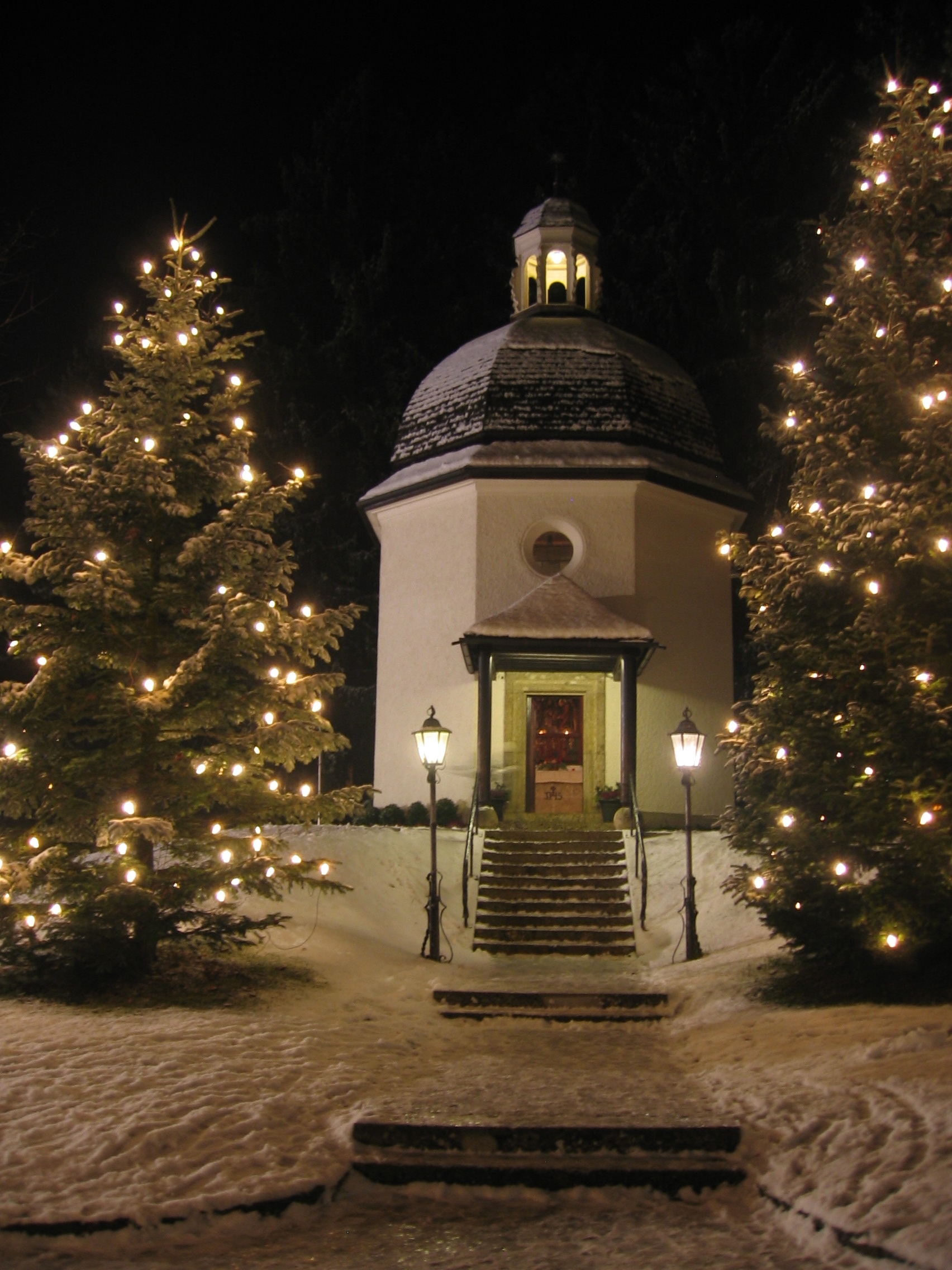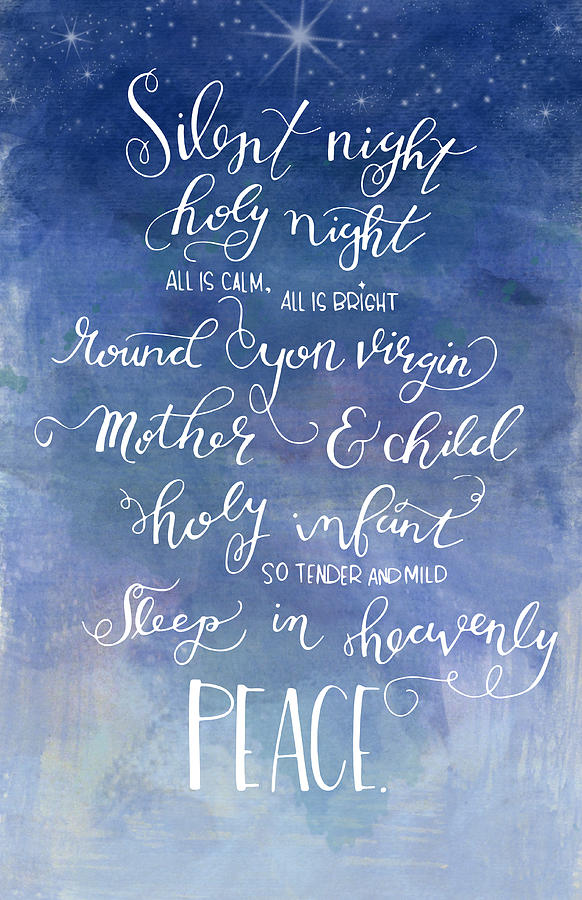Luke 2:8-20
Identify, contrast and imagine together verse 19 and 20.
Contemplaye the kindness of God. The spirit of Christmas is the spirit of kindness.
Titus 3:4
Consider celebrating Christmas by inviting friends over for a meal / gathering. Share some names and remember in your prayers this season.
https://www.praisecharts.com/blog/the-story-behind-silent-night/

on the site of former St.Nicola church now stands the Silent-Night-Memorial Chapel.

Joseph Mohr creates the text to "Silent Night!" in the form of a poem in Mariapfarr in the Lungau region where he was living at the time.
1818
In the schoolhouse of Arnsdorf, on Christmas Eve, Franz Xaver Gruber composes a melody to fit the text.
1818
"Silent Night! Holy Night!" has its world premiere on Christmas Eve in the St. Nicholas church of Oberndorf near Salzburg, performed by Franz Xaver Gruber and Joseph Mohr.
1818
In the schoolhouse of Arnsdorf, on Christmas Eve, Franz Xaver Gruber composes a melody to fit the text.
1818
"Silent Night! Holy Night!" has its world premiere on Christmas Eve in the St. Nicholas church of Oberndorf near Salzburg, performed by Franz Xaver Gruber and Joseph Mohr.
FIRST PERFORMANCE - OBERNDORF, 1818
"It was the 24th of December of the year 1818, when the then assistant priest Joseph Mohr at the newly established parish of St. Nicholas in Oberndorf handed over to the organist represented by Franz Gruber (who at the time was also school teacher in Arnsdorf) a poem, with the request to write a fitting melody for 2 solo voices together with choir and for accompaniment by guitar." These are the words of Franz Xaver Gruber which he wrote on December 30, 1854 in his "Authentic Account of the Origin of the Christmas Carol, 'Silent Night, Holy Night!'" Later the same day, on the 24th of December, Gruber came to the musically talented Mohr and handed over to him his composition. As Mohr liked what he saw, this song was included in the Christmas mass that evening. Mohr sang the tenor part and provided accompaniment with guitar, while Gruber sang bass. According to Gruber, the song was met with "general approval by all" in attendance (mostly shipping laborers, boat builders and their families).
In Gruber's "Authentic Account," there is no mention of the specific inspiration for creating the song. One supposition is that the church organ was no longer working, so that Mohr and Gruber therefore created a song for accompaniment by guitar. Surrounding this premiere performance of "Silent Night!" many romantic stories and legends have been written adding their own anecdotal details to the known facts.
In Gruber's "Authentic Account," there is no mention of the specific inspiration for creating the song. One supposition is that the church organ was no longer working, so that Mohr and Gruber therefore created a song for accompaniment by guitar. Surrounding this premiere performance of "Silent Night!" many romantic stories and legends have been written adding their own anecdotal details to the known facts.


| Christmas Eve 1818. In 1818 the carol "Stille Nacht! Heilige Nacht" was heard for the first time in a village church in Oberndorf, Austria. The congregation at that Midnight Mass in St. Nicholas Church listened as the voices of the assistant pastor, Father Joseph Mohr, and the choir director, Franz Xaver Gruber, rang through the church to the accompaniment of Father Mohr's guitar. On each of the six verses, the choir repeated the last two lines in four-part harmony. On that Christmas Eve, a song was born that would wing its way into the hearts of people throughout the world. Now translated into hundreds of languages, it is sung by untold millions every December from small chapels in the Andes to great cathedrals in Antwerp and Rome. | ||
| 2 | ||

